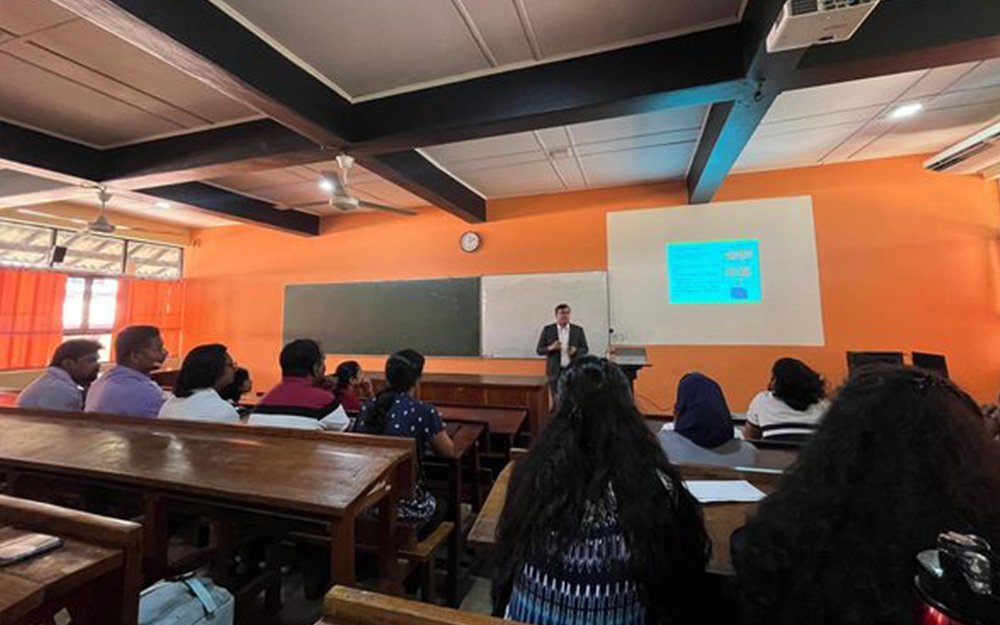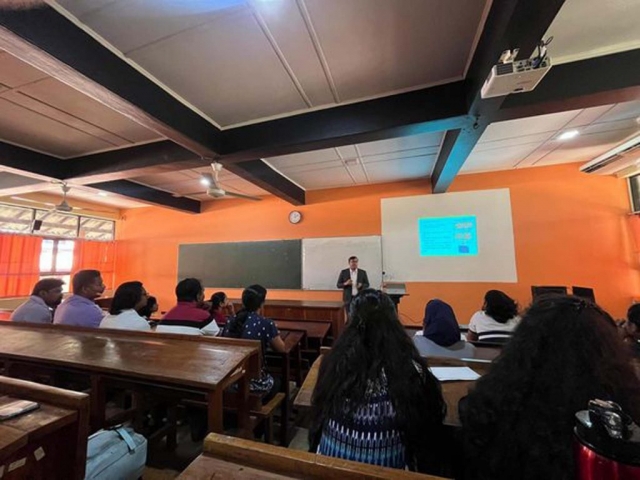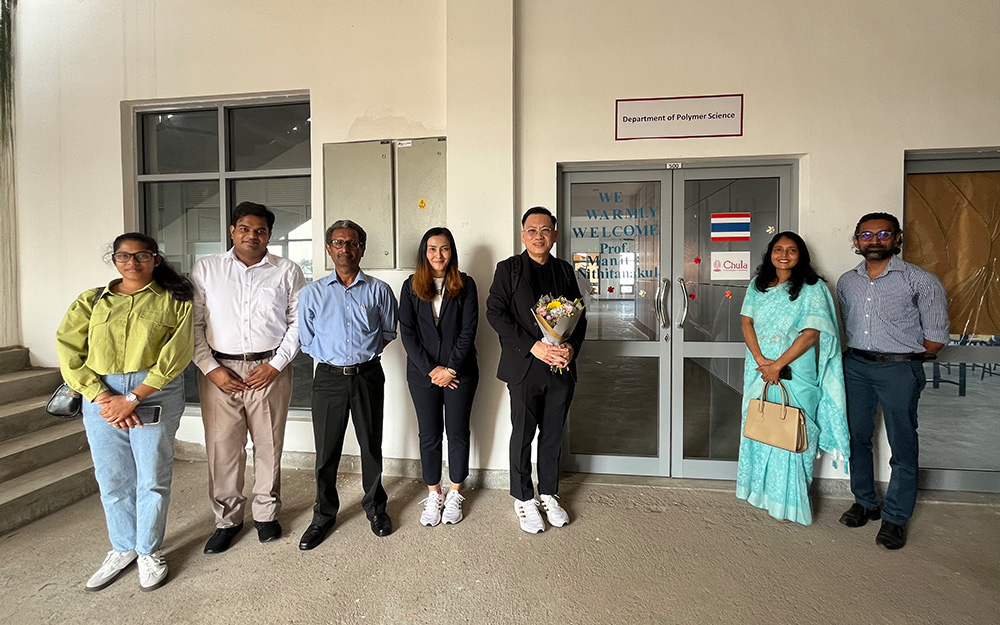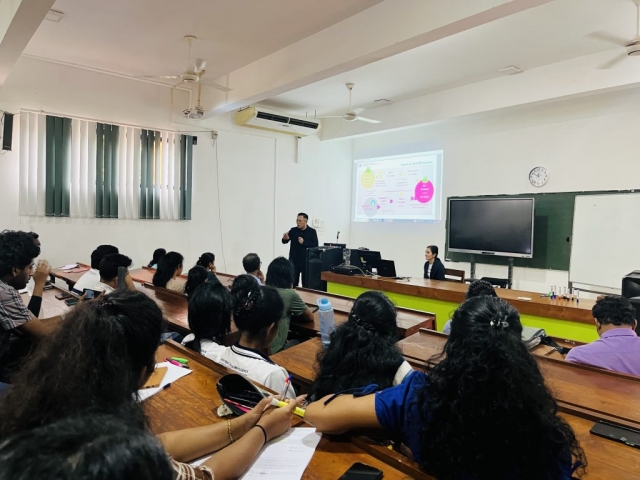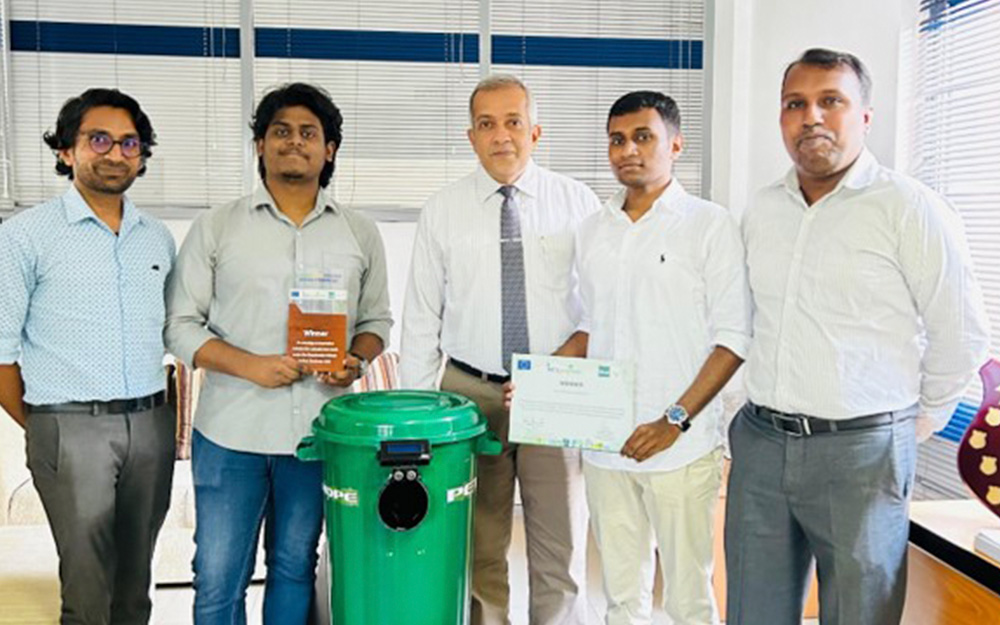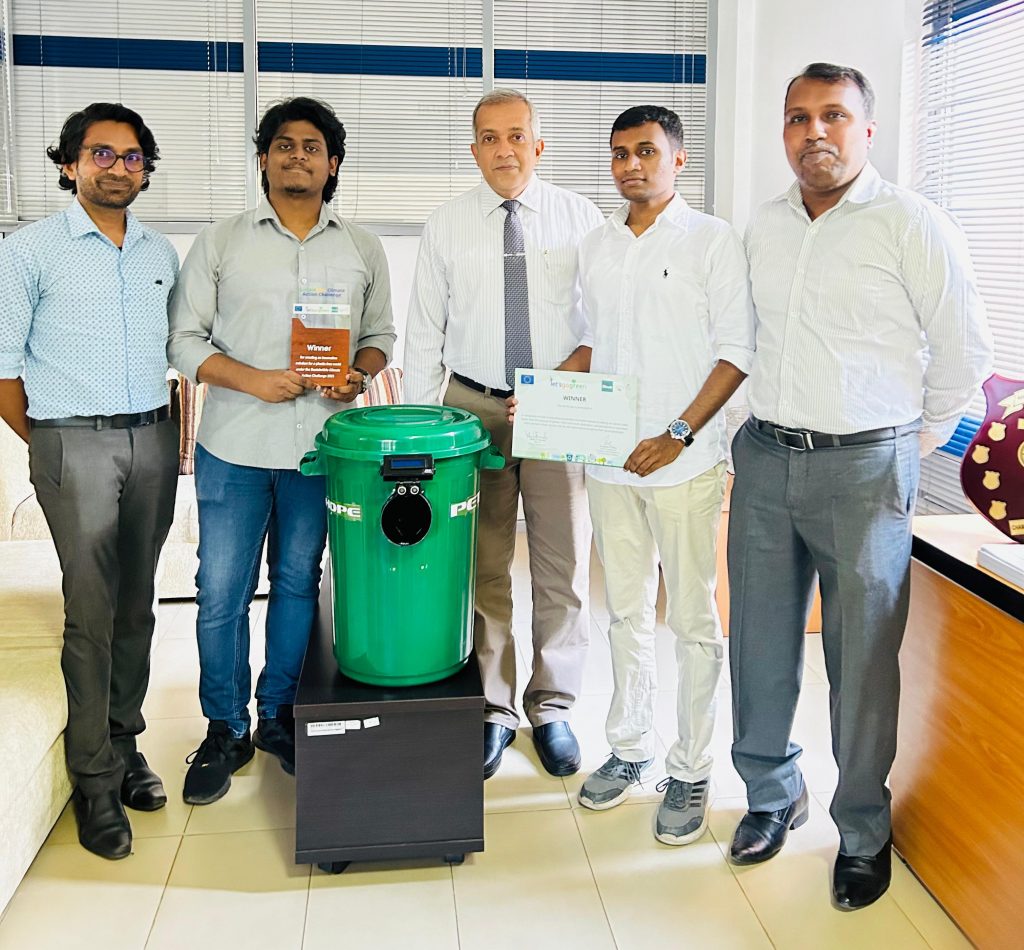Professor Hemanth Noothalapati, a well-known researcher from Shimane University, Japan, visited the Department of Polymer Science on March 18, 2024, at the department’s invitation. His fields of interest include analytical chemistry, Raman spectroscopy, data analysis, artificial intelligence, and machine learning. During his visit, he delivered a talk on the scientific applications of Raman spectroscopy and engaged in knowledge-sharing sessions related to this field. In addition, he interacted with research presentations given by selected students from the Department of Polymer Science for their application to the Sakura Science Exchange Program at Shimane University.
Professor Hemanth also met with the Dean of the Faculty of Science to discuss potential research collaborations. Furthermore, he had the opportunity to meet with the Vice Chancellor of the university to explore opportunities for research collaboration between the two universities. These discussions proved fruitful, leading to successful outcomes.


